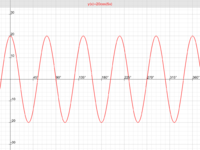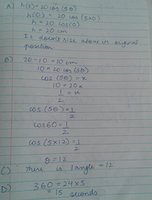blueberry7680
New member
- Joined
- Oct 23, 2020
- Messages
- 2
On the merry-go-round, each horse moves up and down five times in one complete revolution. The up- and - down motion of each horse can be modeled by the function h(t) = 20cos(5ϴ), where h is the horse's displacement in centimetre from its centre and ϴ is the rotation angle of the merry-go-round. Assume the rides begins when ϴ=0 degrees for a given horse.
Answer the following Questions based on the above information:
A) At what rotation angles will the horse be displaced 15 cm above its original position in one revolution?
(B) At what rotation angles will the horse be displaced 10 cm below its original position in one revolution?
(C) How many angles you will get for situation given in part (B).
(D) How long will it take for one complete revolution if the carousel rotates at a speed of 24degrees/sec?
(E) At what rotation angles will the horse be displaced 20 cm below its original position in one revolution?
PLEASE ANSWER WITH THE WHOLE METHOD,THANK YOU
Answer the following Questions based on the above information:
A) At what rotation angles will the horse be displaced 15 cm above its original position in one revolution?
(B) At what rotation angles will the horse be displaced 10 cm below its original position in one revolution?
(C) How many angles you will get for situation given in part (B).
(D) How long will it take for one complete revolution if the carousel rotates at a speed of 24degrees/sec?
(E) At what rotation angles will the horse be displaced 20 cm below its original position in one revolution?
PLEASE ANSWER WITH THE WHOLE METHOD,THANK YOU


